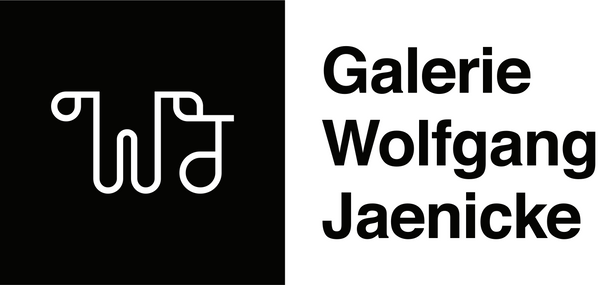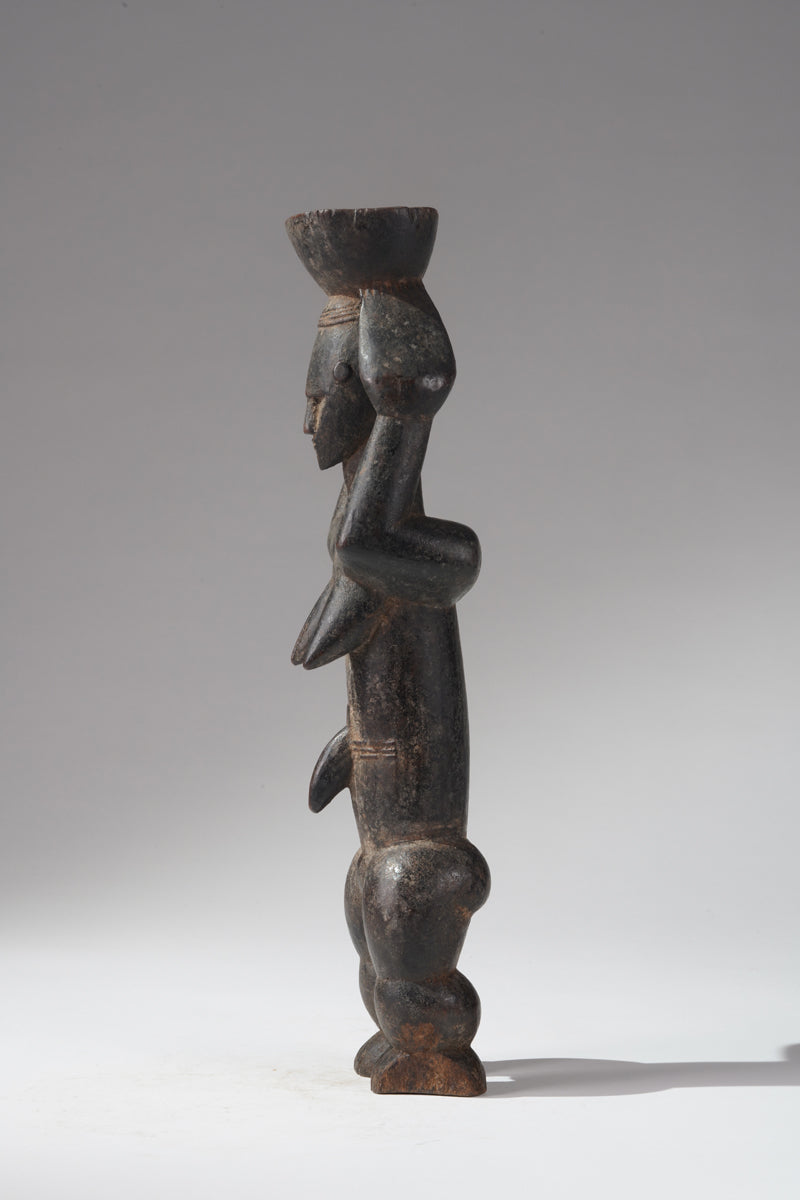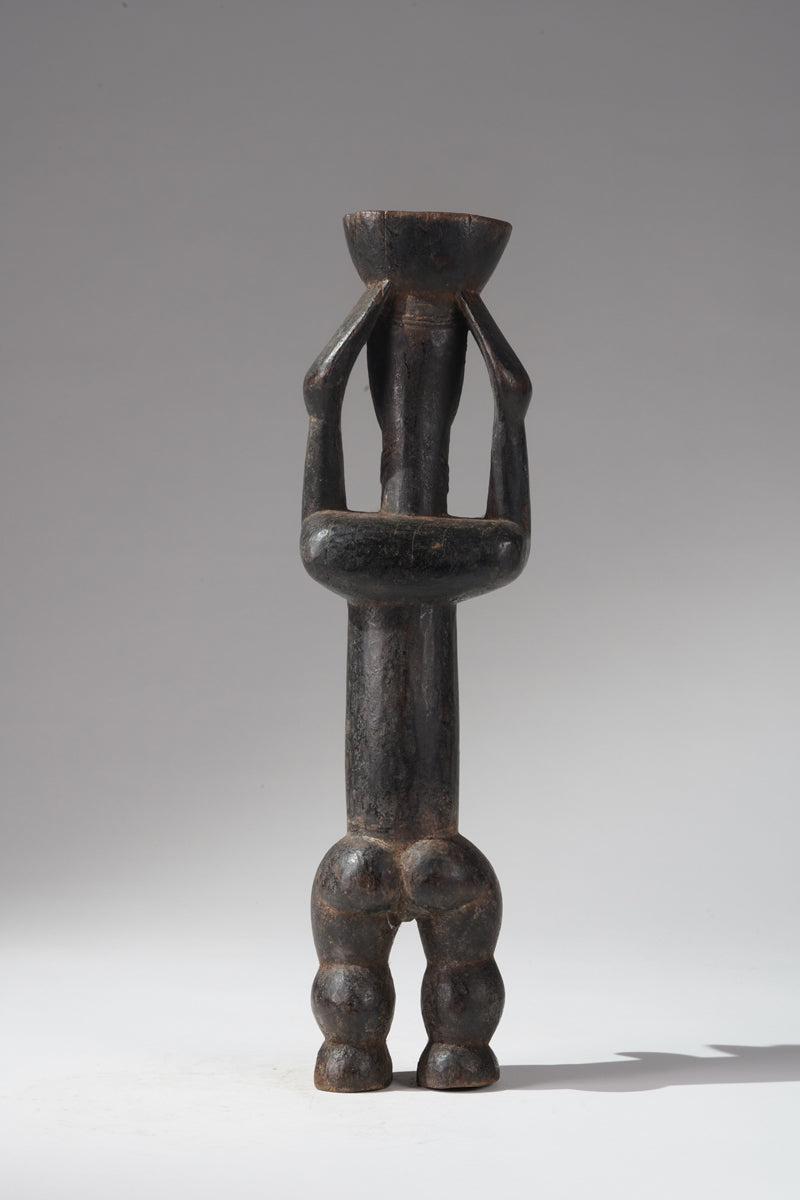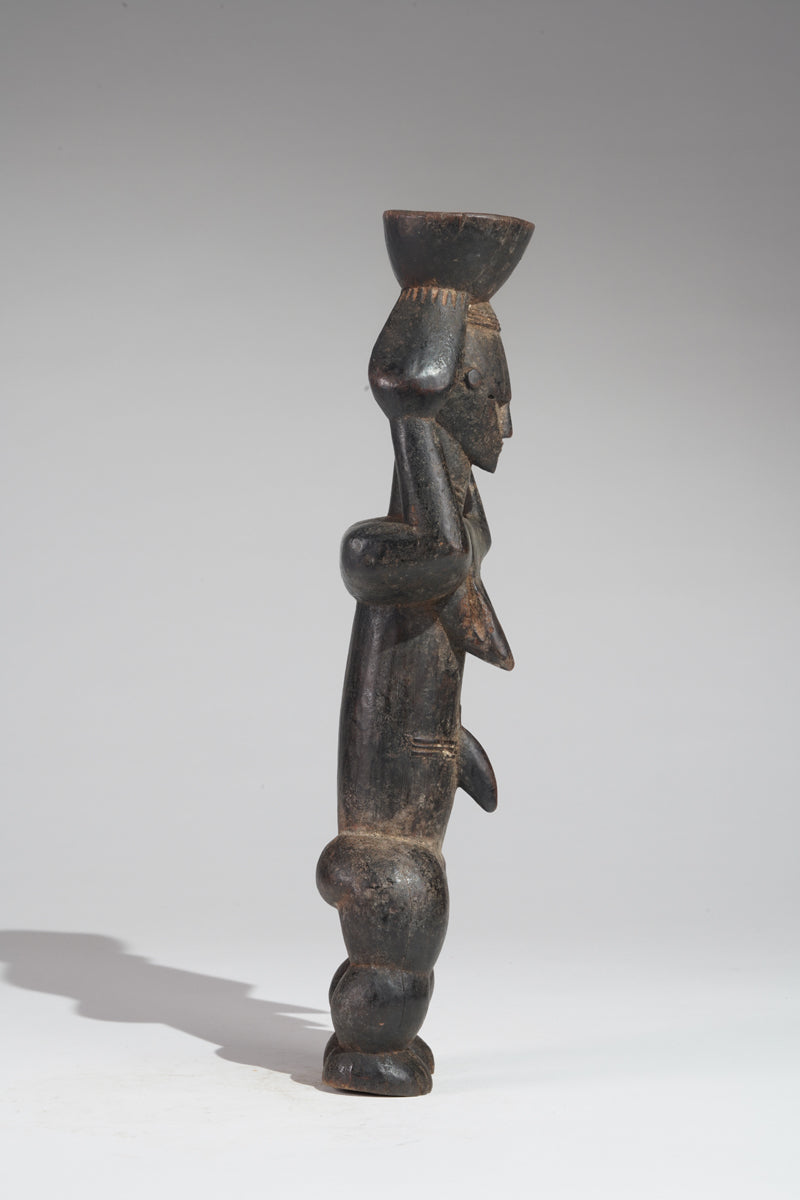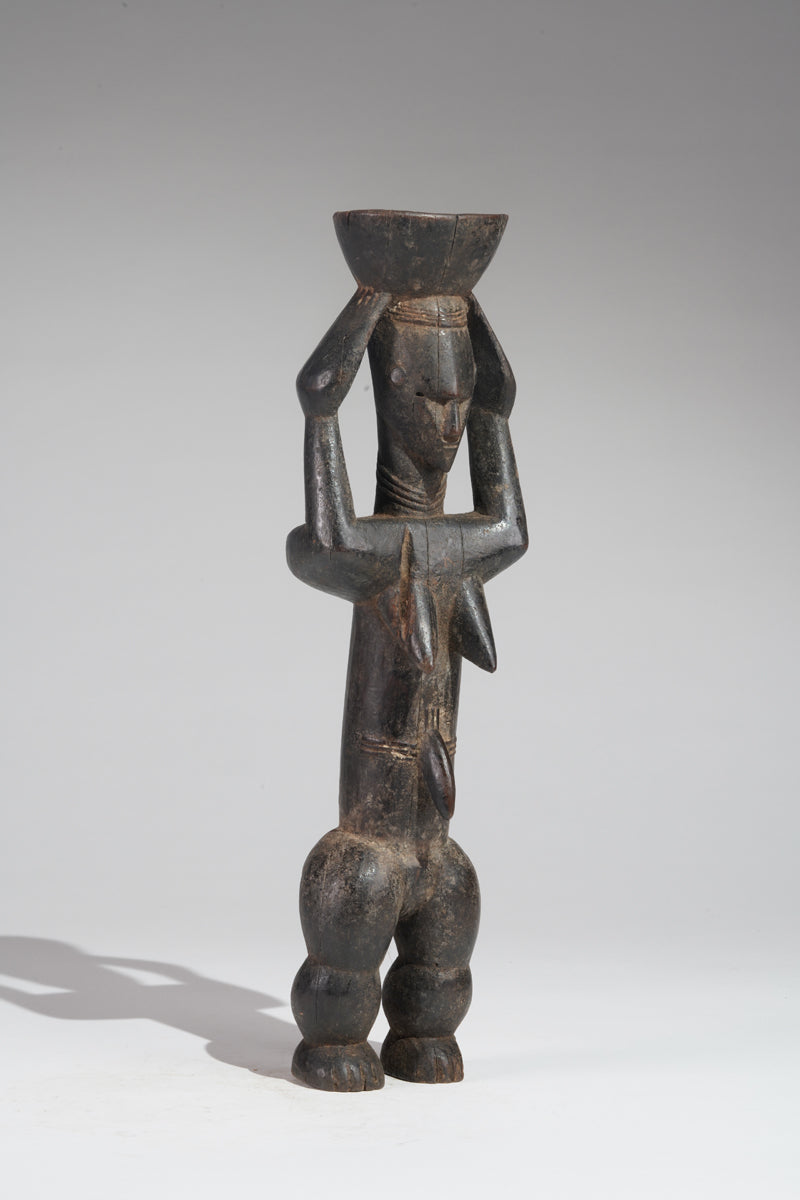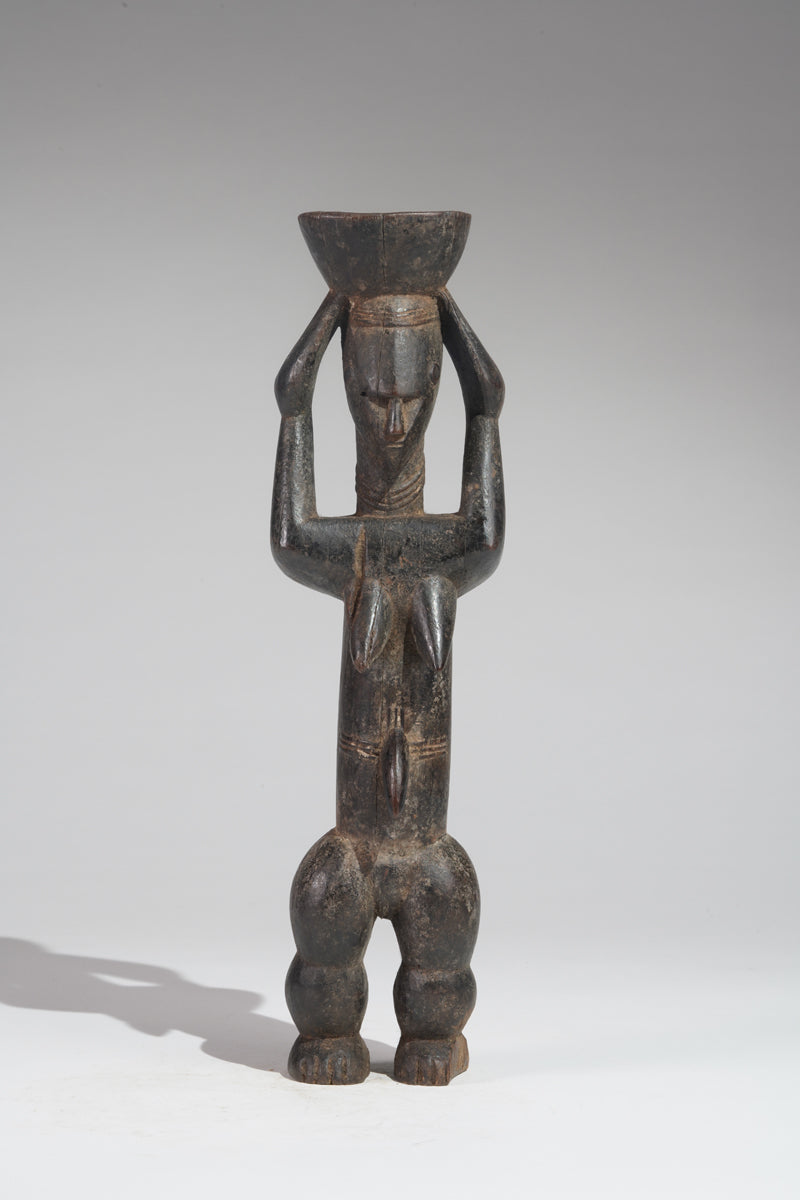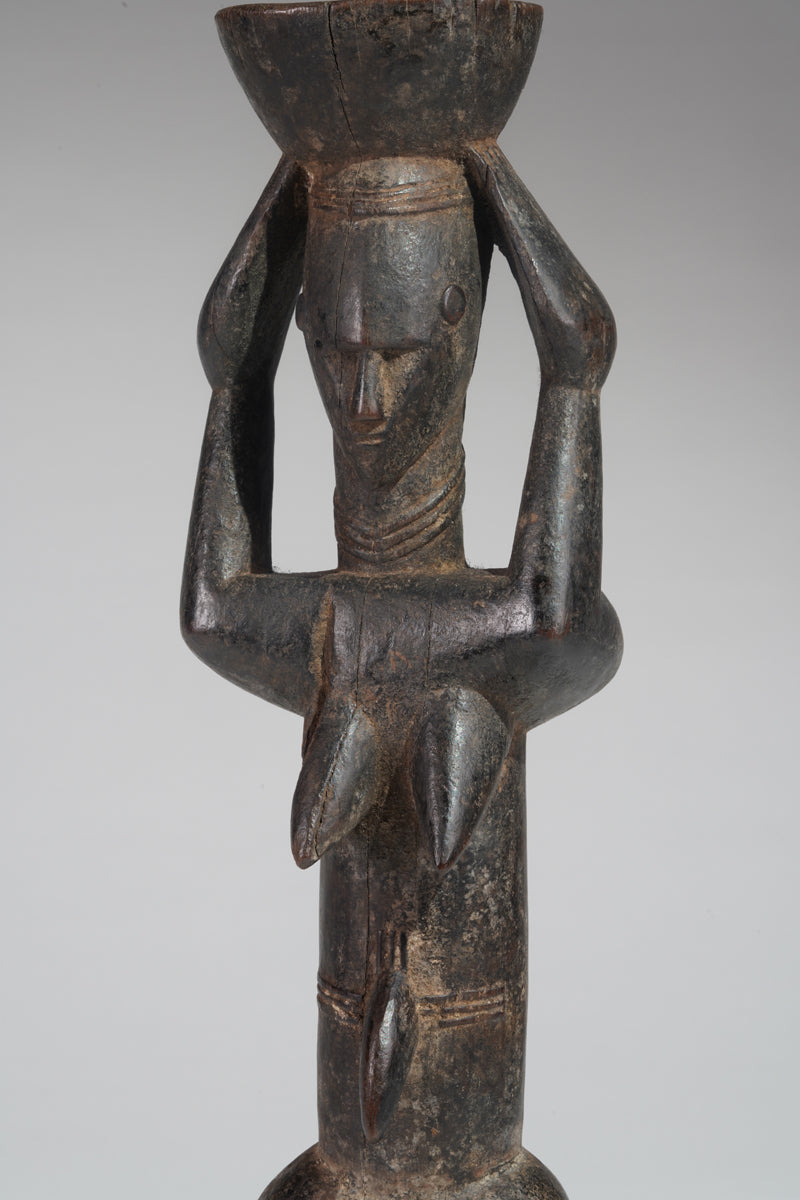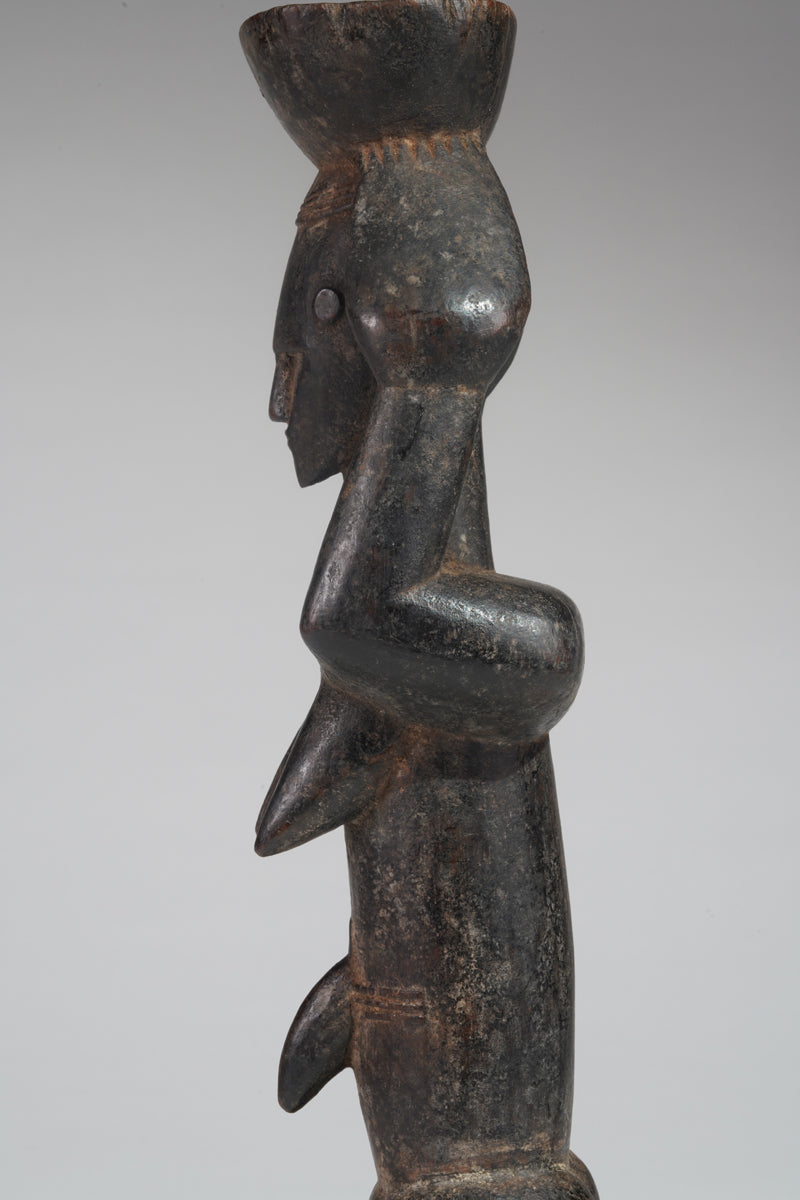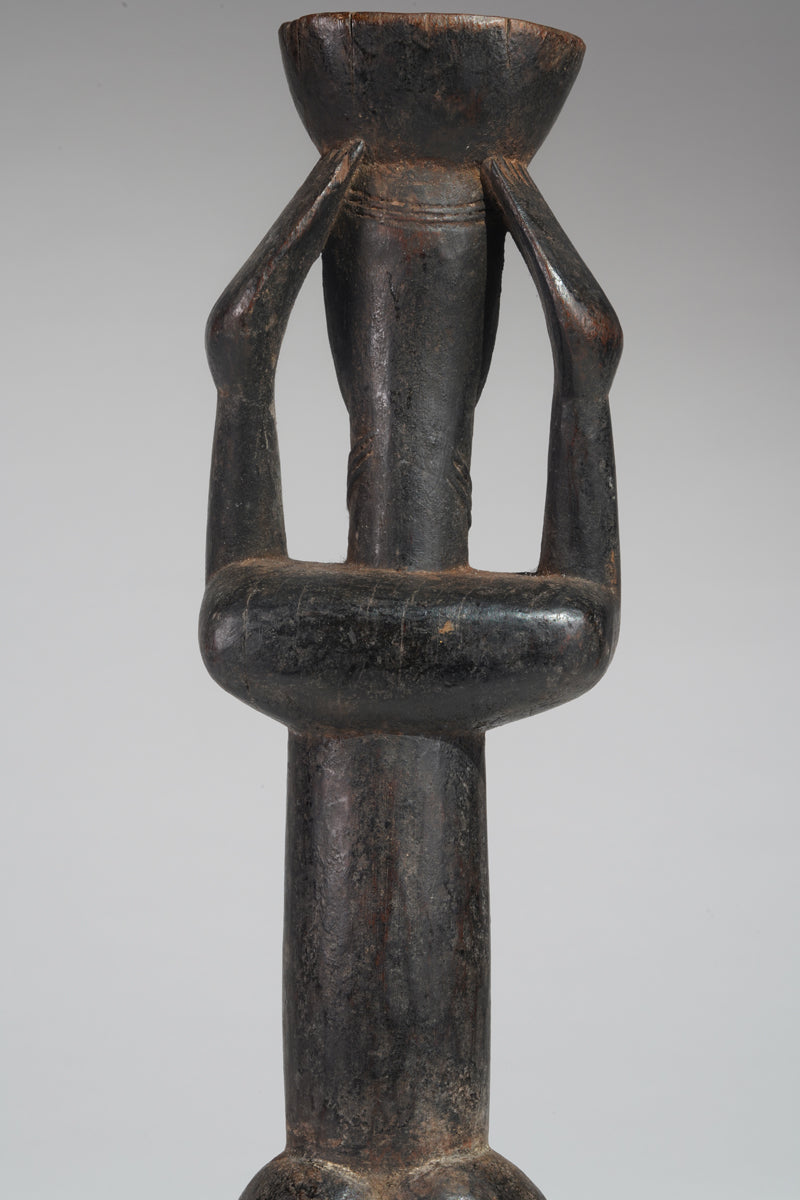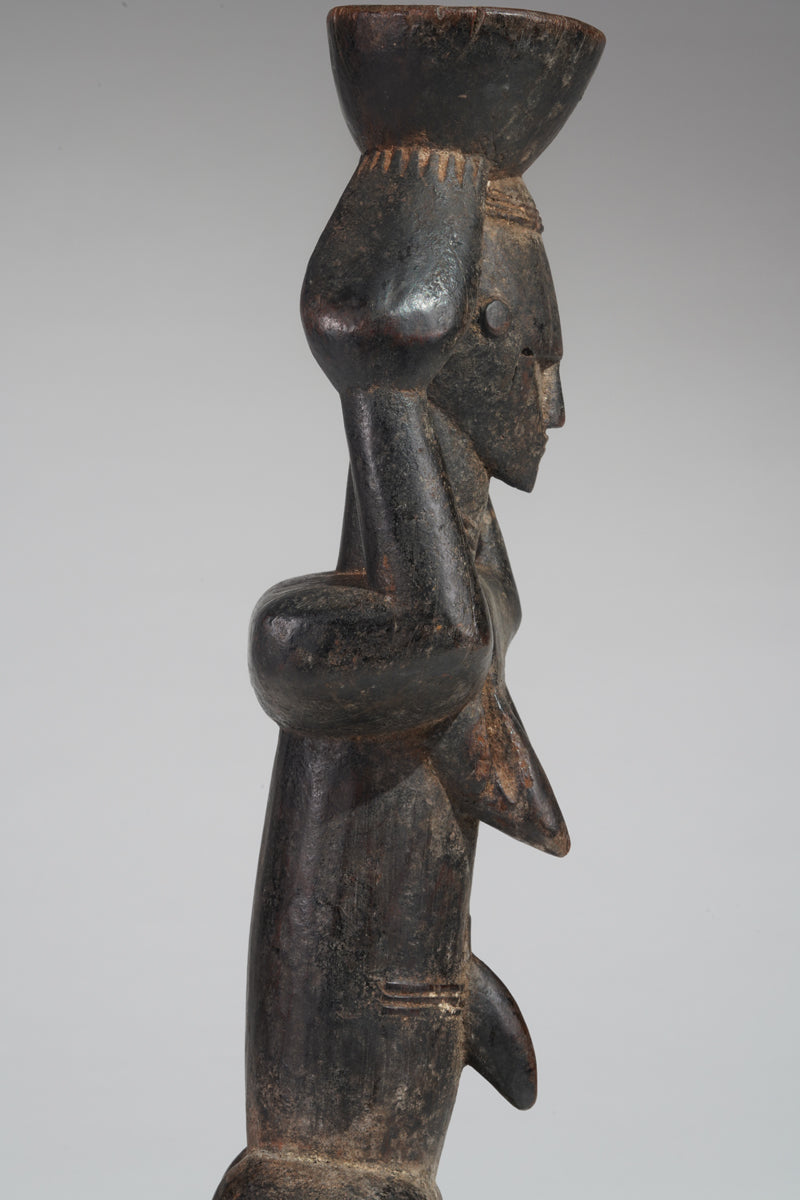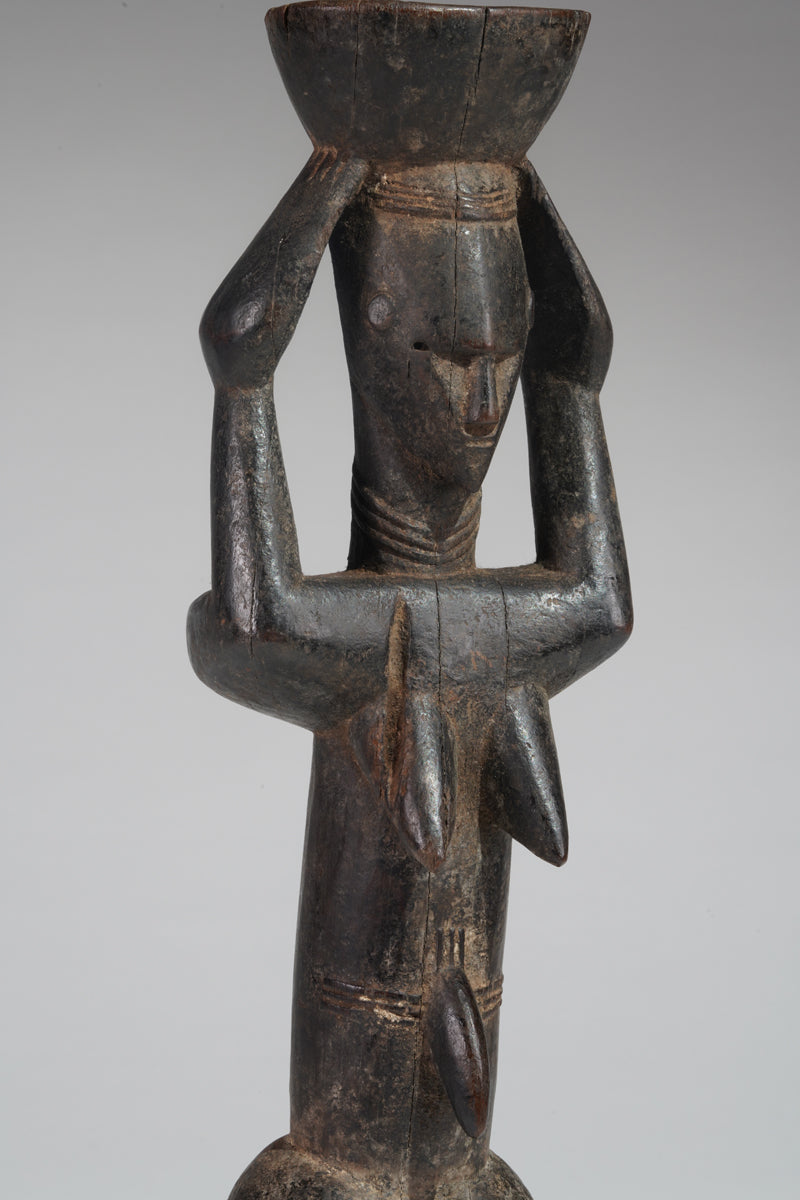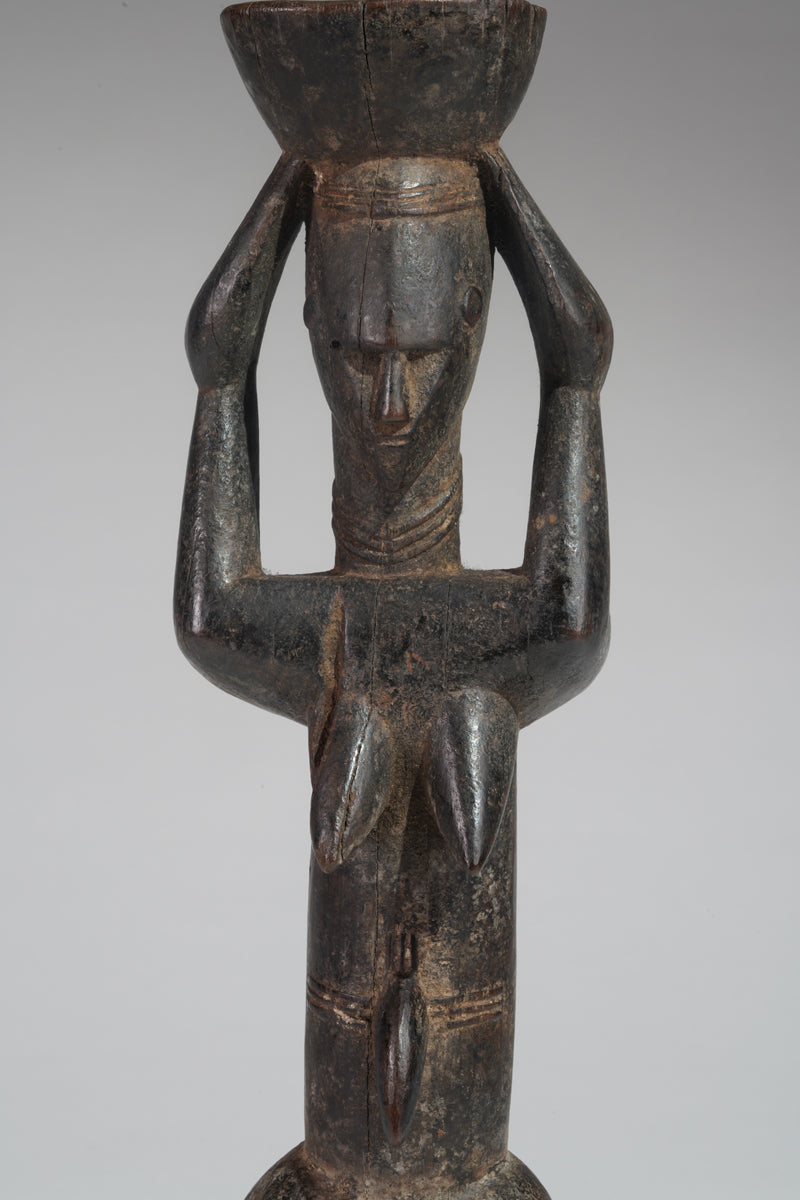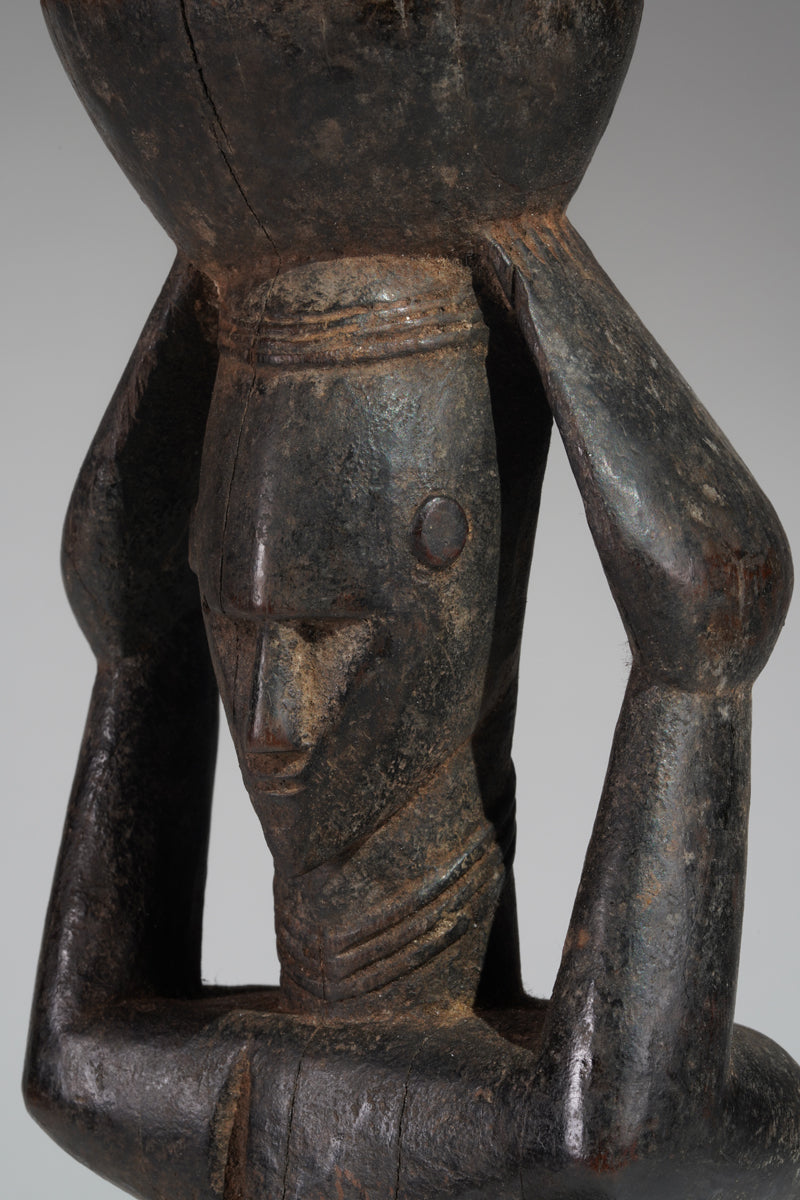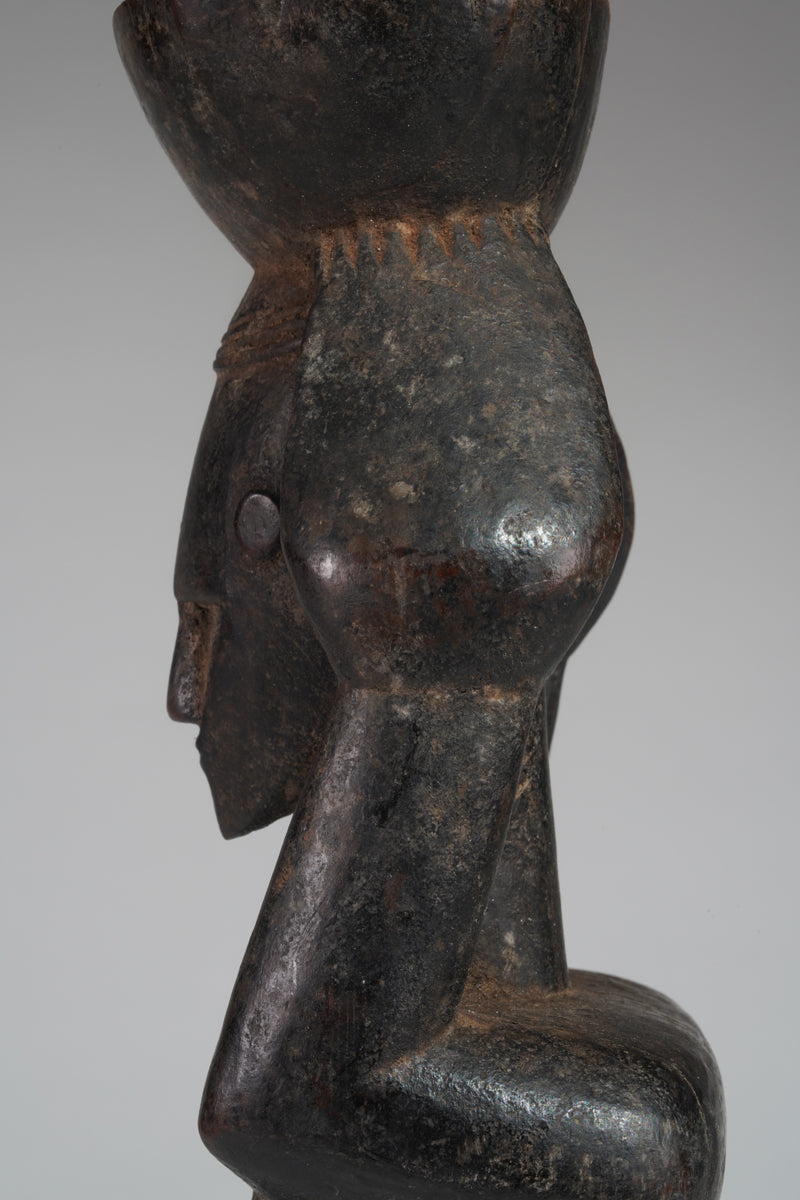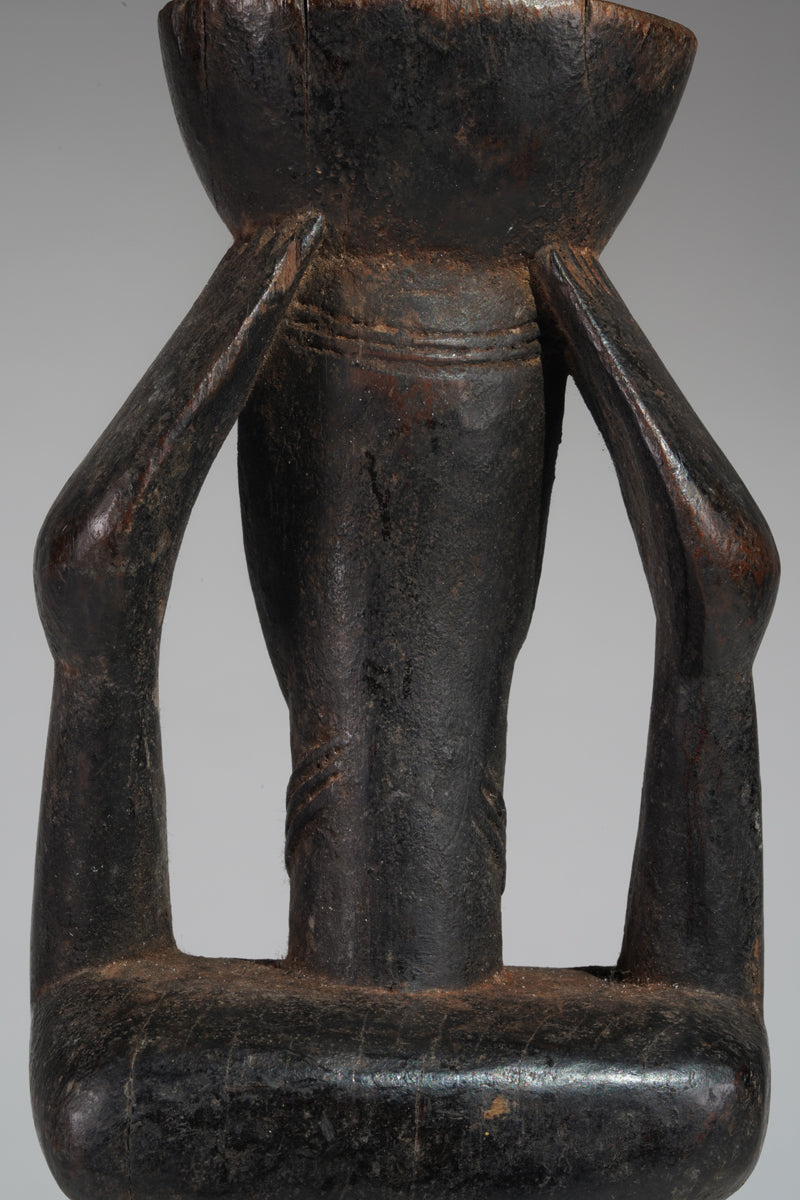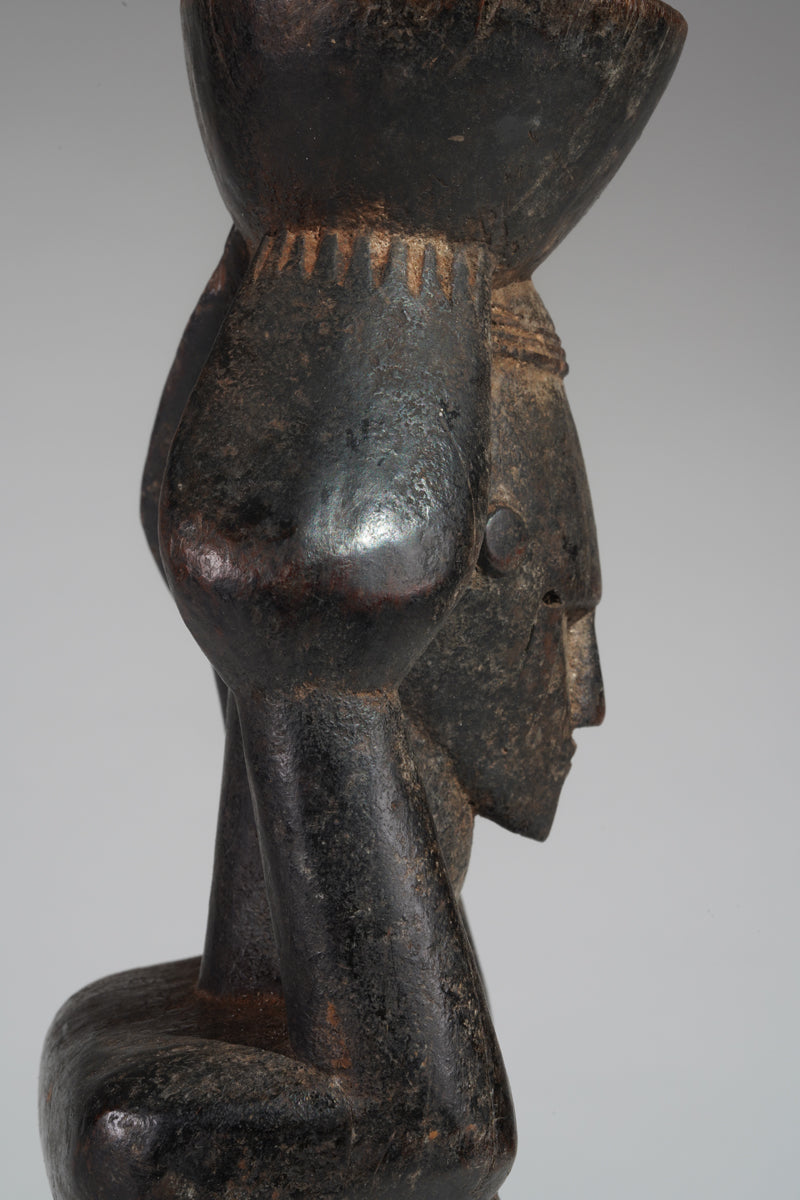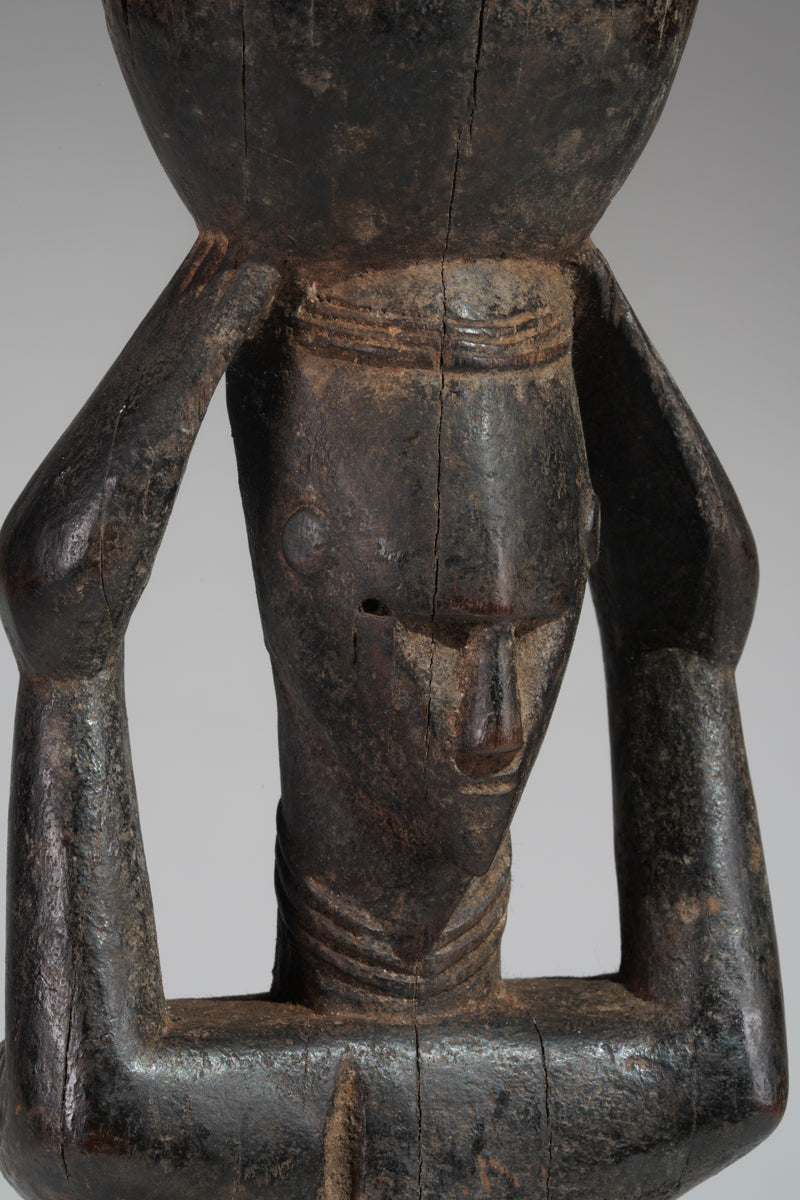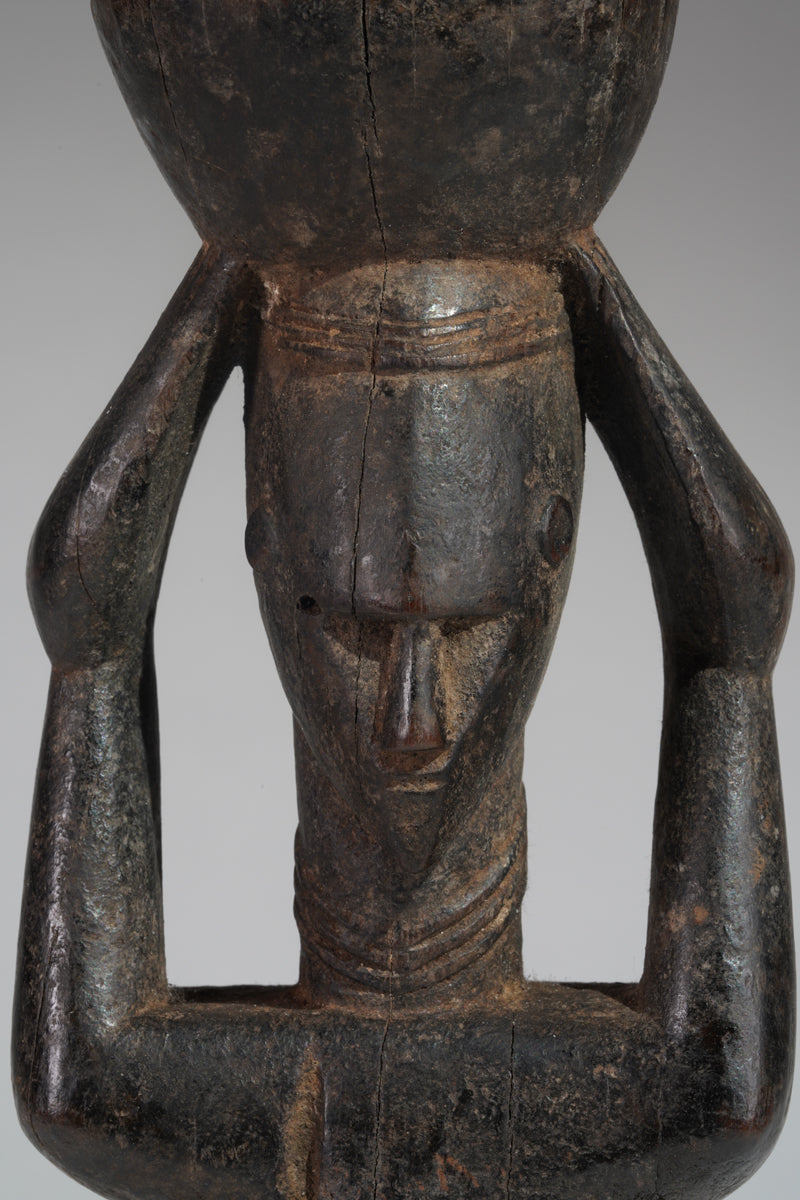wolfgang-jaenicke
A female Bété sculpture
A female Bété sculpture
Couldn't load pickup availability
A female Bété sculpture stands with a rigid, imposing stance; provenance Alpha Gazambe, Abidjan, Ivory Coast,The head is oversized and cuboid, with deep-set eyes carved into flat planes, the nose a sharp triangular prism. The arms are reduced to rectangular volumes, and the torso is split into interlocking angular shapes of breasts, chest and protruding navel that convey both strength and cubistic
abstraction.
The most peculiar and distinctive style of Bété masks from Côte d'Ivoire lies in their intense visual aggression and elaborate surface decoration.
Statuary is rare among the Guro. These predominantly female representations are somehow akin to those made by their Dan and Bete neighbors. Little reliable information was available until Homberger and Fischer (1985) were able to confirm their role in the divination process linked to zuzu private shrine rooms. The theory has been recently validated by A.-M. Bouttiaux. She has pointed out that Guro statues that are not used during divination rituals, often represent a female entity embodying a yo tutelary spirit - or perhaps an ancestor. They seem to have been worshipped on domestic altars and bore all attributes associated with the ruling class (Bouttiaux, A.-M, Guro, Milan, 2016).
Incidentally, their Bete neighbors use similar female figures as a portrayal of mythical beings whose image bears all the symbols of feminine beauty - as is the case of the Laliberté figure. Those statues are characterized by realistic carving which focuses mainly on facial grace and beauty, on the torso’s elegance and on a powerful set of legs. In spite of the fact that the conception of this artwork suggests a possible origin in Bete territory, the hairdo, carving of the face as well as the gesture is undeniably of Guro origin. As is the case with other related figures, the arms rest on the abdomen highlighting the torso - as it is the case due to the presence of a complex dynamic created by scarifications.
Lorenz Homberger was the first individual to identify this body of works and in so doing, certified the existence of at least a dozen or so objects belonging to this genre. (Homberger, L. and Fischer, E., Die Kunst der Guro, Elfenbeinküste, Zürich, 1985, p. 277). In this context, the Laliberté sculpture is a pivotal addition to this body of works.
It bears close resemblance to certain artworks that Eberhard Fischer credits to one of the most important sculptors - that is the ‘Master of Bron-Guro’. As noted by Fischer ‘these figures are superbly crafted and display the artistic mind of a unique Guro personality. There is no doubt that this master is indebted to the ‘Master of Buafle’, yet he has pursued his own vision, possibly a family tradition, to express his artistic preferences’ (Fischer, E., Guro. Masks, Performances and Master Carvers in Ivory Coast, Munich, 2008, p. 339). The rectangular element emerging from the head as well as the large convex forehead, half-closed eyes, delicate shaping of the object are features akin to works published in Fischer’s three monographs - that is the two masks of the former Marceau Rivière collection as well as another mask from the ex-Kofler-Erni collection (ibid, 2008, no. 337-339). Source: Christies
Auctionhouses: Sothebys, Christies, Dorotheum, Sothebys,
Art deaker; Baba Keïta, Abidjan, Wolfgang-Jaenicke,
wj
Price on request.
Height: 40 cm
Weight: 1,2 kg


















